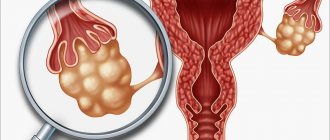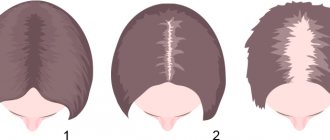28.06.2017
Diseases of the chest and abdominal cavity | Gastrointestinal tract
Health is harmony. Disease is its violation. Let's apply this ancient thesis to the problem of obesity.
Do we need adipose tissue? Certainly! Otherwise it wouldn't exist at all. And not only in people, but also in other living beings. Why is it needed?
First of all, to protect internal organs:
- mechanical;
- thermal (insulation and energy source);
- antitoxic (toxins that the body cannot get rid of are “hidden” out of sight - in the fatty tissue of the buttocks and thighs);
- energy (fat is a reliable source of energy that is available to the body during so-called lipolysis).
Adipose tissue stores not only toxins, but also what the body may still need - water, hormones, etc. And not only stores, but also creates! The same hormones, for example. Sex hormones have been known for a long time. But they learned about adiponectin only at the end of the twentieth century. It is an active participant in carbohydrate-fat metabolism, and it precisely maintains the “metabolic harmony” of the body (preventing the occurrence of obesity, diabetes, inflammation in tissues, and atherosclerosis). The paradox is that the more adipose tissue, the less it produces this hormone.
The first stages of the formation of vitamin D (without it the body is unable to absorb calcium) are also carried out by adipose tissue.
And adipose tissue also serves as a source of stem cells! These “jacks of all trades” can carry out a variety of rescue operations in the body and turn into cells of bone, cartilage, muscle, nervous and other tissues.
But if fat is so good, why is too much of it bad?
First of all, the mass. Although fat is light, but in large quantities it gives a noticeable weight gain. An additional “backpack” also loads the body’s systems, just like a real one. Only rarely does anyone actually periodically walk with a backpack of 30 or even more kilograms. Particular overloads occur on the cardiovascular system (the heart itself, arteries, veins), respiratory, excretory and endocrine. Although adipose tissue produces important biologically active substances, it is not always “more fat - more substances”, and “more substances - better for the body”.
Disharmony of fat metabolism is both the cause and component of the so-called. metabolic syndrome - disharmony at the level of the whole organism. Its tangible manifestations, entailing other ailments (diabetes mellitus, atherosclerosis, ischemic heart disease, sleep apnea, stroke, etc.), are: insulin resistance, arterial hypertension, endocrine disorders, etc.
Causes of obesity of alimentary-constitutional origin
In the birth of obesity, two components play a special role: a person has no control over the first, the second, especially in the first stages, is entirely in his hands. The first - constitutional - is a genetic given (here is not only the risk of developing metabolic disorders, but also the likelihood of excessive appetite and an inhibited satiety reaction). But conditions are needed for potency to enter the active phase. They are created by the second component - nutritional. Its essence follows from the name. We are talking about nutrition (“alimentum” translated from Latin means “food”) in the sense of both the quantity and quality of what is eaten. But that's not all. Another factor is the body's need for energy and nutrients. The more active your lifestyle, the higher it is.
As a result, we obtain a simple exchange formula: receipt minus expenditure. The higher the final value, the more worries the body has about what to do with the excess. Against the background of the corresponding genetic data, the body chooses a completely logical method - to save in reserve. Moreover, in difficult living conditions (in the past, and for some in the present), such a strategy was one of the conditions for survival.
One should not discount the factor of upbringing, or rather, the habits adopted in the family.
In psychosomatics, the topic of obesity is associated with the concepts of “protection” and “love”. Only a person acquires them at the wrong level. The same principle applies to increased appetite. Unsatisfied spiritual hunger (its “food” is conscious life experience) “descends” to the level of the body and finds its satisfaction in the absorption of material food.
Obesity - symptoms and treatment
Obesity is one of the significant factors that contribute to the development of metabolic syndrome . Its signs:
- visceral obesity;
- disorders of carbohydrate and lipid metabolism;
- arterial hypertension.
Metabolic syndrome is often accompanied by:
- cardiovascular diseases;
- diabetes mellitus;
- non-alcoholic fatty liver disease (NAFLD);
- cholelithiasis;
- polycystic ovary syndrome;
- obstructive sleep apnea syndrome;
- joint diseases (osteoarthritis, gout);
- increasing the risk of developing cancer (for example, studies have found a connection between metabolic syndrome and insulin resistance with prostate cancer).[7][8]
Non-alcoholic fatty liver disease (NAFLD) is one of the most common liver diseases and is closely associated with insulin resistance and metabolic syndrome.[9] It is individuals with metabolic syndrome who have the highest risk of developing NAFLD. According to various studies, the incidence of NAFLD in patients with type 2 diabetes mellitus and obesity ranges from 70 to 100%. Insulin resistance leads to the accumulation of triglycerides in the liver and the formation of fatty liver disease, which (if untreated) gradually progresses to fibrosis and then cirrhosis.[10] At the stage of steatosis, the disease is asymptomatic; at the stage of steatohepatitis, an increase in liver enzymes is observed. Steatosis and fibrosis are reversible stages of liver disease, so it is extremely important to detect the disease at an early stage in order to prevent the development of an irreversible condition - cirrhosis.
Obese patients often have obstructive sleep apnea (OSA) , a condition in which the airways partially or completely collapse during sleep. It is characterized by loud snoring during sleep, episodes of respiratory arrest during sleep, and severe daytime sleepiness. This condition disrupts the sleep process, leads to fatigue, severe daytime sleepiness, memory problems, decreased performance (falling asleep at work), increases the risk of cardiovascular complications, and due to low blood oxygen saturation, slows down metabolism and prevents the patient from losing weight with obesity. The screening method for diagnosing OSA is overnight pulse oximetry (a non-invasive method for measuring % blood oxygen saturation). If there is a significant decrease in blood oxygen saturation according to pulse oximetry, polysomnography is indicated.[11] Using this method, various physiological signals of the human body are continuously recorded: electrical activity of the brain, heart activity, breathing pattern (presence or absence of episodes of respiratory arrest), degree of blood oxygen saturation.
Symptoms of nutritional-constitutional obesity
Doctors have their own markers that help determine the degree of distress: body mass index, the thickness of the fat fold under the shoulder blade, on the thigh, abdomen, etc. But you can do without them: obesity in the literal sense of the word is obvious.
Other signs are already a consequence of stress, and over time, overload of the body's systems. This:
- dyspnea;
- high blood pressure;
- sweating;
- problems with the digestive system;
- joint pain;
- venous insufficiency;
- sleep disorders;
- fast fatiguability;
- apathy.
And... a strong feeling of hunger. This paradox is explained both by changes in metabolism during obesity (huge reserves become truly untouchable and are instantly replenished by blood glucose, the decrease of which causes hunger), as well as by disturbances in appetite regulation and a lack of satiety.
Obesity classification
To date, doctors have identified four degrees of obesity.
If necessary, you can find out the stage of the disease using BMI indicators. Obesity of the 1st degree is an excess of normal body weight by 10-30%. For women, a normal BMI is considered to be 28-31; for men, a BMI is 30-32.
Obesity 2 degrees is an excess of normal body weight by 30-49%. For women, a normal BMI is considered to be 31-34.5, for men, a BMI is 32.3-37.2.
Obesity of the 3rd degree is an excess of normal body weight by 50-99%. For women, a normal BMI is considered to be 35.5-47.3, for men, a BMI is 37.7-49.7.
Obesity 4 degrees is an excess of normal body weight by 100%. In women, the BMI is more than 47%, in men - more than 49%.
Obesity 3 and 4 is considered a serious disease, because not a single organ or system can function normally with such an amount of fat in the body.
Obesity treatment
Lost harmony can be restored. The main thing is to want. The 3D approach to treating obesity includes:
- diet;
- movement;
- trust and goodwill towards yourself and the world.
The first and second components are adjusted to the negative result of the above-mentioned formula “receipt minus expenditure” (in very simple terms it looks like “run more, eat less”). The third makes it easier to achieve the desired effect and consolidates the result.
Moreover, the concept of diet should be interpreted in an etymological sense, as a way of life. This is what needs to be changed. Drastically and for life (temporary, albeit significant efforts have proven their failure in the long term).
Despite the decrease in the quantity and energy value of food, it must remain complete (contain all the components necessary for the body). It is advised to enrich it with dietary fiber, which “deceives” the saturation centers with its large volume, restoring peristalsis and intestinal microflora. You should not give preference to carbohydrates, the excess of which easily turns into fat.
Auxiliary measures for the treatment of obesity include: breathing practices, physiotherapy, massage and psychotherapy.
Complications of obesity
Since obesity is a disease of the endocrine system, it causes complications in several body systems at once, as a result of which a wide range of complications can develop:
- Metabolic syndrome - causes cardiovascular diseases associated with tissue intolerance to insulin;
- Gastrointestinal tract disorders - occur quite often and are associated with the fact that acidic contents enter the esophagus from the stomach;
- The development of type 2 diabetes mellitus - develops due to a violation of insulin secretion by pancreatic cells;
- Stroke - as a result of circulatory problems in the brain;
- Heart attack - as a result of the death of a section of the heart muscle;
- Cholecystitis - inflammation of the urinary tract and bladder;
- Oncological complications - develops as a result of the degeneration of ordinary cells into tumor cells.
Obesity cure
Most patients, turning to a doctor with their problem, expect that he will prescribe them an anti-obesity medicine, which they will use and “it’s all done.” But that's not true. The fact is that only in 2-3% of all cases of nutritional obesity the cause of this disease is associated with some other disease. And in other cases (97-98%), the reason is banally clear: systematic overeating against the background of little physical activity, and there is no cure for this. No, of course, there is a medicine for obesity, the action of which is aimed at suppressing a person’s appetite, or at influencing the nervous system, which gives signals to the brain about the “saturation” of the body. But such medications cause unpleasant side effects, they are ineffective, and do not solve the problem of restoring the immune and endocrine systems. An effective way to combat obesity is diet and systematic exercise. Attention! In the process of fighting obesity, it is important to restore the functionality of the immune system, because It is its dysfunction that underlies nutritional obesity. Otherwise, after losing extra pounds, you will gain them back over time (which is what happens in most cases). This is why there is a cure for obesity, this is the immune drug Transfer Factor, which is used in the complex therapy of this disease. The basis of this drug is made up of immune molecules of the same name, which, when entering the body: - eliminate failures of the endocrine and immune systems, and promote their further normal development and formation; - being information particles (of the same nature as DNA), transfer factors “record and store” all information about foreign agents - causative agents of various diseases that (agents) invade the body, and when they invade again, “transmit” this information to the immune system a system that neutralizes these antigens; — eliminate side effects that are caused by the use of other medications. There is a whole line of this immunomodulator, of which TransferFactor Advance and TransferFactor Glucouch are used in the Endocrine System program for the prevention and complex treatment of endocrine and immune diseases and complications, including alimentary obesity.
Nutritional obesity: causes
The causes of this disease are divided into external and internal. The main cause of nutritional obesity is an external (exogenous) factor: an imbalance between the energy that enters the body (in the form of food) and its waste. Excess energy is deposited on the skin in the form of fat. Conclusion: systematic overeating against the background of low physical activity leads to nutritional obesity of various stages. External (exogenous) causes of the disease: - genetic predisposition (for example, if both parents suffer from obesity, then in 80% of cases their offspring suffer from this); — disturbances of metabolic processes in the body; — various endocrine and immune diseases; - hormonal disorders as a result of pregnancy and childbirth in women and during adolescence in men.
Types of obesity
A person has areas where the amount of deposits is greater. These are the so-called “fat depots”. Conventionally, obesity is divided into two types:
- According to the male type, the so-called. android obesity - the bulk of fat is located in the abdominal region (belly area).
- According to the female type, the so-called. genoid obesity - deposits on the hips and buttocks.
There are also two types of obesity:
- Hypertrophic – more often characteristic of older people. In this case, the total number of fat cells remains unchanged, but they increase in volume.
- Hyperplastic - the number of cells increases, there is a constant feeling of hunger, and overeating leads to further cell growth. This situation is more common in people with a hereditary predisposition, adolescents and women during menopause.









